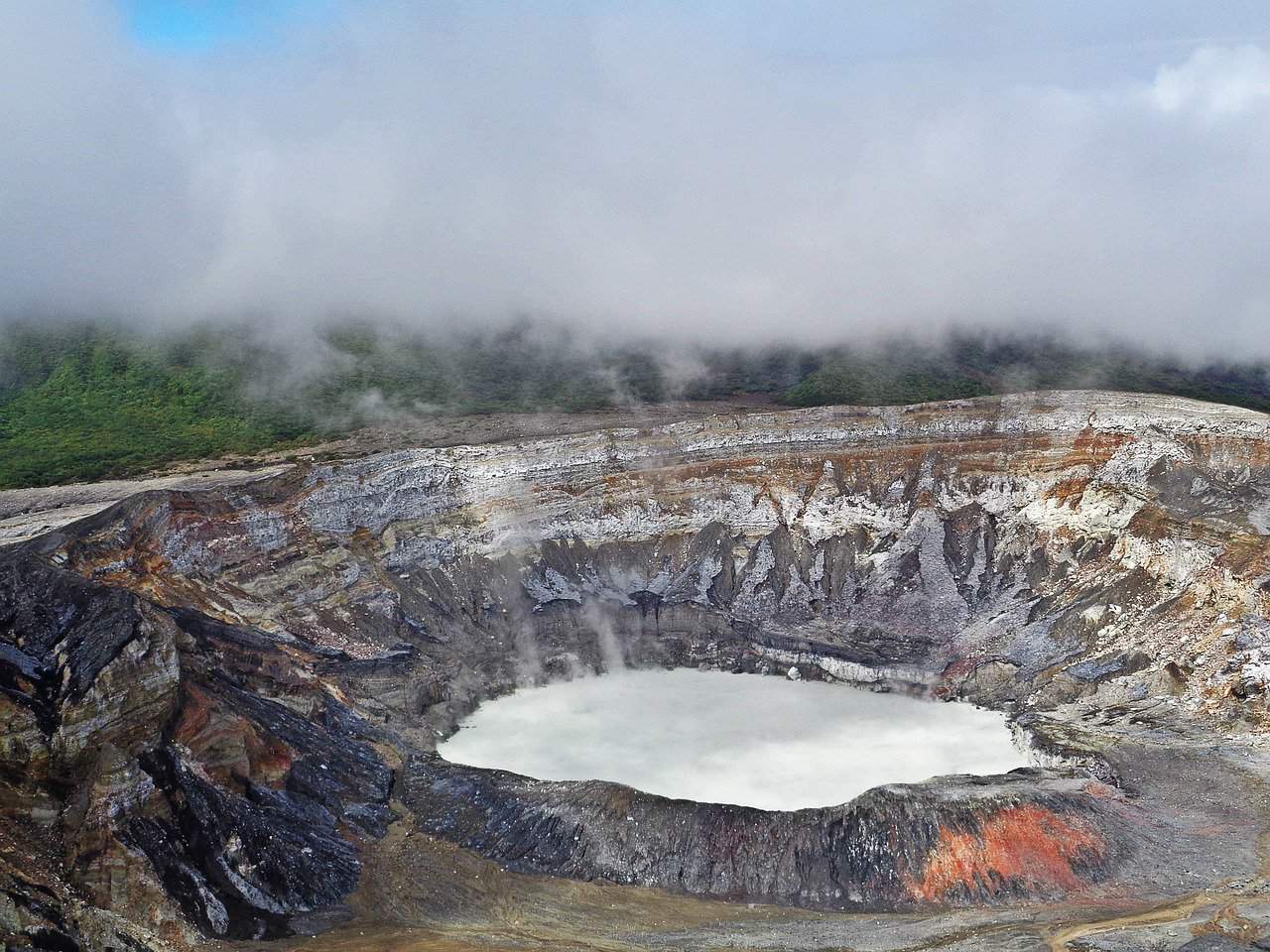Poás, Costa Rica’s most-visited volcano and national park, north of San José, has a new cafeteria, artisan shop and video room, the Ministry of Environment and Energy and a couple of conservationist NGOs announced Dec. 14 at a mountaintop ceremony. This is good news for people who arrive on one of Poás’ frequent days of thick fog, park officials said. Visitors can now sip espresso, buy handicrafts by about 300 national artisans and watch what they’re missing volcano-wise on wide-screen television.
The NGO Foundation for the Development of the Central Volcanic Range (FUNDECOR) contracted another private, nonprofit organization, the TropicalScienceCenter, to install and run the $73,000 additions, which the center remodeled into the park’s visitor center.
FUNDECOR contracts others to “free up park rangers,” the organization’s president Harry Wohlstein said. (Private concessionaires get tourists basic goods such as food, postcards and toilet paper, so rangers can go back to ranging.)
The improved services at Poás will generate $200,000 a year, according to FUNDECOR assistant director Carlos Herrera, who said the funds will go back to the Environment Ministry’s Central Volcanic Range Conservation Areas, including the park at Poás.
In 1993, FUNDECOR began working with the Environment Ministry, and it now operates in the following conservation areas: Irazú Volcano National Park, east of San José; Braulio Carrillo National Park, which includes Barva Volcano, north of San José; Guayabo National Monument, near the Caribbeanslope town of Turrialba; and Poás National Park. Next in line are basic tourist services at Turrialba Volcano, a mostly undeveloped conservation area east of San José,Wohlstein said.
The public-private system is not privatization, and won’t steal business from nearby tourist-dependent communities, said Ronald Vargas, director of the Environment Ministry’s agency that oversees the Central Volcanic Range Conservation Areas. The cafeteria doesn’t serve lunch on purpose, and the TropicalScienceCenter gets its art and employees from area communities. FUNDECOR put the local Red Cross in charge of parking lot vigilance, through which the Red Cross earns money to buy ambulances.
Jorge Rodríguez, second in command of Costa Rica’s Environment Ministry, wotime member of FUNDECOR’s board of directors and TropicalScienceCenter member, told the gathering the ministry needs more money to buy land for conservation areas. The ministry hopes to increase the country’s protected lands from 26% of the national territory to 33%, he said.
This year, the state spent approximately $621,800 to add 13.6 hectares to Poás’ landholdings, said Rafael Gutiérrez, director of the Central Volcanic Range Conservation Areas. Poás Volcano National Park, about 45 kilometers north of San José, sees more than 260,000 visitors a year, according to FUNDECOR.
The volcano’s crater is one of the world’s widest, and it pitched a bunch of rocks and dirt into the air earlier this year (TT,March 31).






